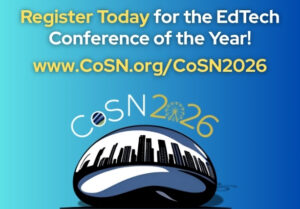Table of Contents
In a rapidly evolving world, the need for an adaptive and future-ready educational system has become more crucial than ever. Enter Agile, a dynamic framework that has gained significant traction across various industries for its ability to foster collaboration, innovation, and flexibility. As educators, it’s essential to understand that Agile is not a full curriculum or set of provided lessons but rather a transformative way of working that empowers students and reduces stress on teachers.
It is essential to clarify what Agile means in education and how it can revolutionize the learning experience for students and teachers alike.
Agile: A New Way of Working
Agile was created in the field of software development. Work was not efficient, did not meet its purpose and was ignoring the needs of the customers. Instead of developing a heavy rigid way of working by standardizing and boxing in creativity, Agile was adopted as a lean adaptive framework based on the needs of the developers and the customers.
Agile is a flexible framework based on how humans work together. The values and principles highlight the need for clear communication, open collaboration, high levels of reflection and completing work in small increments to be able to adjust easily. But Agile’s impact is not limited to the tech industry. The same principles that have revolutionized software development can be effectively applied to education, fostering an environment where students and educators can thrive.
The Agile Way of Working in Education
At its heart, Agile in education emphasizes student engagement, collaboration, and self-directed learning. Rather than relying solely on traditional teaching methods, Agile encourages teachers to facilitate a more dynamic learning environment where students take an active role in their education. Agile is not a set of strict rules, or a complete curriculum. It is a framework that builds a culture of learning and adapting. The teachers gain the autonomy they deserve and the students are empowered to personalize their learning.
Agile classrooms are highly adaptive to the needs of the school, teacher and most importantly the students. Some teachers slowly introduce elements of Agile, while others jump in head first. There is not a one size fits all approach to Agile, which is what makes it unique. The Agile framework is based on the needs of humans working and learning together.
It’s important to clarify that Agile does not replace the teacher’s expertise or their responsibility to provide the curriculum and resources. Instead, Agile enhances the teacher’s role as a guide, mentor, and facilitator of learning. By adopting Agile practices, teachers can better tailor their approach to suit the diverse needs of their students, ensuring a more inclusive and effective educational experience.
Embracing Agile for a Future-Ready Education System
The world is evolving rapidly, and the skills required to thrive in the 21st century are changing with it. Agile offers a forward-looking approach that equips students with essential skills, including adaptability, collaboration, critical thinking, and problem-solving – skills that will be invaluable in their future careers.
As educators, it is crucial that we embrace this transformative way of working to create an education system that fosters innovation, creativity, and resilience. Agile provides a roadmap for building an engaging and empowering learning environment that prepares students for the challenges of the future. It is not a rigid curriculum or way to work, but a lightweight system that encourages personalization and flexibility. Agile embraces that way human beings work and learn together, which is never in a one size fits all box.
Agile is not just a buzzword; it is a powerful approach to learning that encourages collaboration, critical thinking, and self-directed growth. By adopting Agile principles, educators can reduce stress, create a more student-centric learning environment, and prepare their students for a successful future.
Subscribe to edCircuit to stay up to date on all of our shows, podcasts, news, and thought leadership articles.




